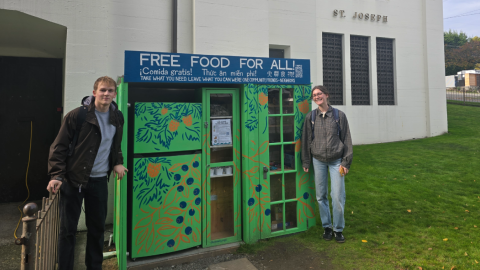Heat is a quiet killer. Unlike most natural disasters, which can leave visible damage across an entire region, a heat wave’s effects on human health can be difficult to track. So after record high temperatures struck the Pacific Northwest in the summer of 2021, official estimates included only people killed directly by heat exposure.
A new study led by Joan Casey, assistant professor in the UW Department of Environmental & Occupational Health Sciences (DEOHS), shows those estimates don’t capture the true toll. Published April 6 in the American Journal of Public Health, the study found that over the three weeks beginning June 25, 2021, dangerously high temperatures contributed to an additional 159 injury deaths across Washington state.

To reach that figure, Casey and a team of researchers first calculated how many people might have been expected to die from injuries over that same period had the heat wave not happened. They then compared that estimate with official death records.
The result includes deaths that the heat wave contributed to indirectly, including drownings, transportation accidents, violence and self-harm. Prior studies have shown a strong correlation between temperature spikes and deaths from injury.
“Official death tolls may miss deaths not immediately and obviously tied to high temperatures, but those previously counted may represent just the tip of the iceberg, to use a poor analogy for a heat wave,” said Casey, who is the lead author and conducted this research while on the faculty at Columbia University.
Caused by a ridge of high pressure that trapped hot air over the region, the 2021 heat wave brought unprecedented temperatures to the Pacific Northwest. It likely won’t be the last such event. Climate models project that with 2 degrees Celsius of warming, similar heat waves would occur every five to 10 years, and would likely reach even higher temperatures.
That combination poses a serious threat to public health, making it even more important to understand and plan for future heat waves’ widespread impact. The researchers recommended several actions public health officials could take to prevent injuries indirectly caused by heat waves, including promoting safe swimming to prevent drownings and offering mental health services to stem violence and self-harm.
“Public health officials should allocate a portion of their budget to these extreme but increasingly common events,” Casey said. “Communities require additional support for things like cooling centers—especially in places like the Pacific Northwest, where air conditioning is not common.”
Other authors include Robbie Parks of Columbia University; Tim Bruckner of the University of California, Irvine; Alison Gemmill of Johns Hopkins University; and Ralph Catalano of the University of California, Berkeley. This research was funded in part by the National Institute of Environmental Health Sciences.
For more information, contact Casey at jacasey@uw.edu.




